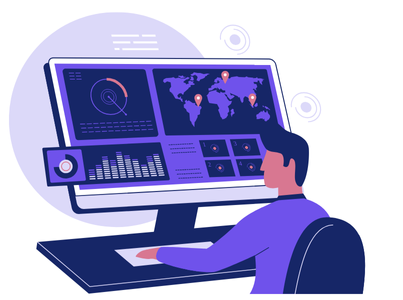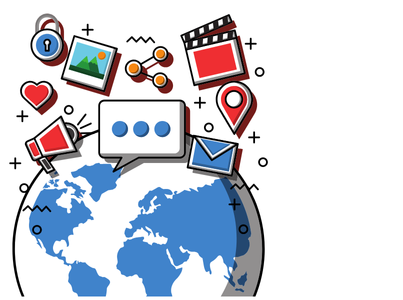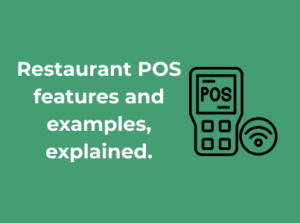The speed of media in the modern world does not only influence the way stories are narrated but also influences the perception of the masses in real time. Social media can turn a negative mention into a national headline within an hour. A stock price can also be influenced by an executive comment that can go viral. A PR campaign can be ruined by one misunderstood tweet.
The only protection against such scenarios is real time media monitoring. It allows communications teams to:
- Detect emerging crises before they erupt
- Track brand mentions across thousands of sources simultaneously
- Identify influential voices and sentiment trends
- Understand how narratives are spreading—and where they’re gaining traction
In such high-stakes sectors as finance, healthcare, energy, and politics, even a few minutes of delay in detecting a threat can cost millions of dollars or a damaged brand in the long run.
Key Features That Define Advanced Media Monitoring Services

Contemporary media monitoring services are much more than mention tracking. The current platforms run on AI, natural language processing (NLP), and machine learning algorithms. They offer:
- Cross-platform monitoring: News in print and online, podcasts, Reddit threads, and short-form video services, such as TikTok.
- Sentiment analysis: AI-powered engines provide an indication of whether mentions are positive, neutral, or negative.
- Geo-located intelligence: Find out where people are talking about something in the world and how loud they are talking.
- Real-time alerts: Get real-time alerts on key brand or industry keywords.
- Influencer analytics: Find journalists, influencers and public figures spreading your brand story, positive or negative.
These are not only desirable capabilities but a competitive edge in the business where brand trust, market positioning, and public image directly influence revenue.
How Media Monitoring Platforms Support Strategic Decision-Making
The most effective media monitoring tools do not simply monitor mentions, but use raw data to create actionable insights.
Real-time dashboards enable executives, brand managers and corporate communications teams to visualize spikes in mentions, shifts in sentiment and emerging topics across media channels. This provides organizations with a 360-degree perspective of their media presence and assists in making decisions based on facts, rather than assumptions.
As an example, when a financial services company experiences a spike in negative coverage in a particular area, it can identify the source, determine its accuracy and put the appropriate spokesperson on the ground in minutes. Being able to react before the media story sets in concrete is the distinction between being in control of the discussion and dealing with the fallout.
Real-Time Monitoring in Crisis Management
Possibly the most mission-sensitive use of real time media monitoring is crisis communications. The first red flags of a PR crisis can be found on the periphery sites- blogs, social posts, or online forums. The story is already popular when the traditional media picks it up
Real-time monitoring enables:
- Early detection of emerging crises
- Message alignment across departments and stakeholders
- Tracking public sentiment before, during, and after an event
- Response strategy optimization based on feedback and coverage
A case in point: A pharmaceutical firm introduces a new drug and in a few hours, the side-effect reports start trending on social media. Under the traditional monitoring, this trend may not be detected by the brand until the next news cycle. Real-time tools alert them in real-time and allow them to begin influencing the narrative before it is too late
Integration with Broader Media Intelligence Services

Media intelligence services are a step further to monitoring. They integrate media monitoring and in-depth analytics, competitive benchmarking, influence score of influencers, and reputation management.
When paired with real-time data, media intelligence can reveal:
- Which competitors are gaining attention and why
- Which publications and journalists are shaping industry sentiment
- Which brand messages are resonating with audiences
These insights are invaluable for marketing teams planning campaigns, for PR firms advising clients, and for C-suites shaping communication strategy. In effect, media intelligence becomes a strategic asset rather than a reporting tool.
Industries Leading the Adoption of Real-Time Monitoring
Some industries have moved faster than others in adopting real-time media monitoring tools.
- Finance & Banking: Tracking breaking news, regulatory changes and market sentiment in real time to control investor relations.
- Healthcare & Pharma: Monitoring the discussion in the media about the introduction of drugs, clinical trial outcomes, and patient experience.
- Government & Politics: Monitoring public opinion during elections, policy rollouts, and international incidents.
- Retail & Consumer Brands: Managing influencer relations, seasonal campaigns, and customer feedback at scale.
These industries require hyper-speed, accuracy, and agility—something only real-time tools can provide.
Choosing the Right Real-Time Monitoring Tool
With dozens of providers in the market, not all media monitoring solutions are created equal. Coordinating data exchange across tools often calls for an API integration company to implement stable connectors and robust error handling. The best platforms offer:
- API integration with internal tools like Slack, Teams, and CRMs
- Predictive analytics based on historical data
- Coverage across multilingual, global media outlets
- Custom dashboards for different business units
- Human + AI hybrid curation for maximum accuracy
What you need depends on your business size, media exposure, and communication goals. However, real-time responsiveness, customization, and reliable data are non-negotiable in 2025.
Conclusion: From Reaction to Anticipation
The days of weekly reports in the media are gone. Brands that use stagnant, slow, or obsolete monitoring systems are just too exposed. On the other hand, those companies that invest in real time media monitoring are transitioning to proactive and predictive models of communication.
The payoff is obvious: more effective crisis management, cleverer PR tactics, clearer competitive intelligence and more robust brand reputations.
Real-time visibility is not merely a technological advancement, but a change in the way organizations understand, adjust and lead within a rapidly changing media landscape. Unless you are tuned into the media as it is happening, you are already behind by one step.





